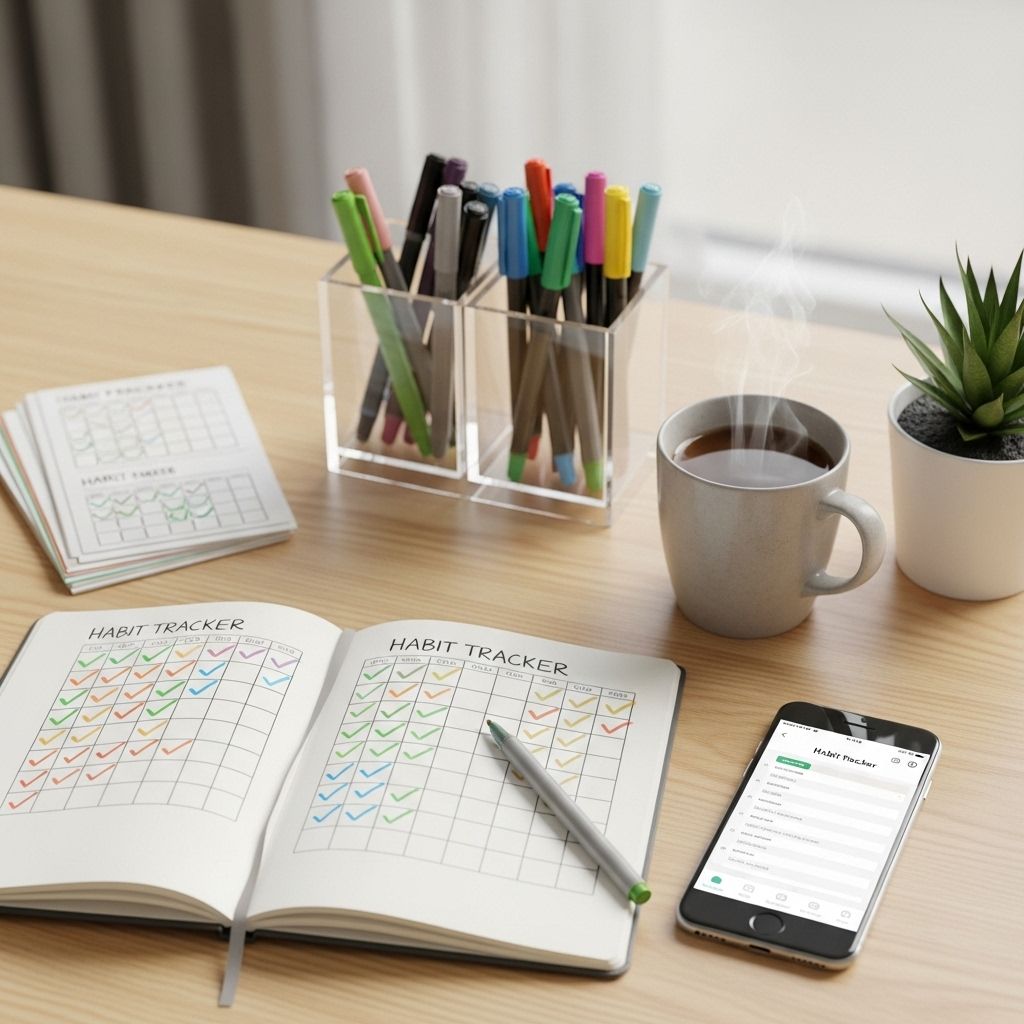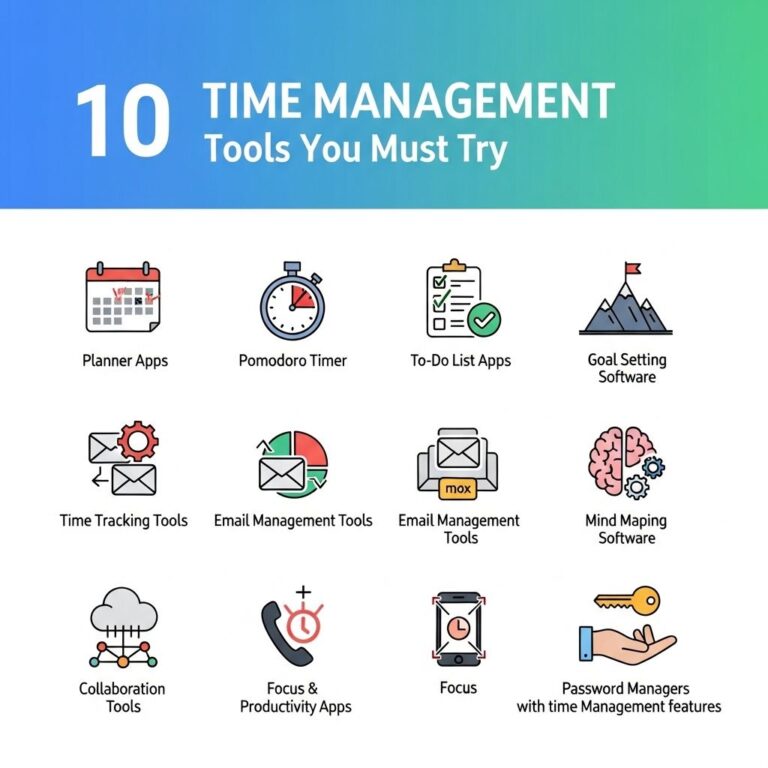In a fast-paced world where distractions abound, developing and maintaining healthy habits can be a challenge. A habit tracker is a simple yet effective tool that can help you monitor your progress and stay motivated. Whether you want to cultivate a new habit or eliminate a negative one, a habit tracker can provide structure and accountability. In this article, we will explore the steps to set up a habit tracker that works for you, the benefits of tracking habits, and some tips to ensure your success.
Table of Contents
Understanding Habit Tracking
Habit tracking is the practice of recording your daily behaviors to evaluate your progress over time. By logging your habits, you can gain insights into your performance and identify patterns that help or hinder your progress. A habit tracker can be as simple or as complex as you wish, ranging from a pencil and paper method to sophisticated apps designed for this purpose.
Why Use a Habit Tracker?
There are several reasons to consider using a habit tracker:
- Accountability: Keeping track of your habits holds you accountable, making it less likely that you will skip days or fall off track.
- Visualization: Seeing your progress visually can boost motivation and encourage you to keep going.
- Pattern Recognition: A tracker helps you identify what works and what doesn’t, allowing you to adjust your strategies accordingly.
- Goal Setting: It aids in setting and refining your goals over time, as you can assess what is realistic and achievable.
Setting Up Your Habit Tracker
Now that we understand the benefits, let’s dive into how to set up your habit tracker.
Step 1: Define Your Goals
The first step in setting up a habit tracker is to define your goals. Consider what habits you want to track and why they are important to you.
- Specificity: Make sure your goals are specific. Instead of stating, “I want to exercise more,” consider saying, “I want to go for a 30-minute walk every day.”
- Feasibility: Choose habits that are realistic and manageable. Tracking too many habits at once can lead to feeling overwhelmed.
Step 2: Choose Your Tracking Method
Next, you’ll need to decide how you want to track your habits. Here are some popular options:
- Paper Journal: Use a notebook to record your habits. This method allows for creativity and personalization.
- Spreadsheet: Create a digital spreadsheet using software like Microsoft Excel or Google Sheets. This option allows for easy manipulation of data and visualization.
- Mobile Apps: There are numerous habit tracking apps available, such as Habitica, Strides, and HabitBull. These apps often come with features like reminders and progress reports.
Step 3: Design Your Tracker
Your tracker design will depend on your chosen method. If using a paper journal, consider creating a table with days of the month along the top and your habits listed down the side. For a spreadsheet or app, set up similar columns and rows.
| Habit | 1 | 2 | 3 | 4 | 5 |
|---|---|---|---|---|---|
| Walk 30 minutes | ✔️ | ✔️ | ❌ | ✔️ | ✔️ |
| Read for 15 minutes | ✔️ | ❌ | ✔️ | ✔️ | ✔️ |
Step 4: Set a Routine
Incorporate habit tracking into your daily routine. Set aside a specific time each day to fill out your tracker. This could be in the morning, during lunch, or at night before bed.
Step 5: Review and Reflect
Regularly review your habits and reflect on your progress. Consider questions like:
- What habits are sticking?
- Which ones are challenging?
- What adjustments can I make to improve?
Weekly or monthly reflections can provide valuable insights and help you stay on track.
Best Practices for Habit Tracking
Keep It Simple
Start with just a few habits to track, then gradually increase as you become more comfortable. Simplicity is key to maintaining motivation.
Be Consistent
Consistency is crucial in habit building. Try to record your habits at the same time each day, and don’t allow missed days to derail your overall progress.
Celebrate Small Wins
Acknowledge and celebrate your achievements, no matter how small. This reinforces positive behavior and keeps you motivated.
Advanced Tracking Techniques
Once you’re comfortable with basic habit tracking, consider implementing advanced techniques to enhance your experience.
Visual Cues
Utilize visual elements such as color coding or stickers to make tracking more engaging. For example, use green for achieving goals and red for missed days.
Habit Stacking
Combine a new habit with an existing one for increased effectiveness. For instance, if you want to meditate for five minutes after your morning coffee, it becomes easier to remember.
Monthly Challenges
Consider participating in monthly challenges where you focus on a single habit for an entire month. This can provide a sense of community and accountability.
Technology in Habit Tracking
As technology continues to evolve, several apps and online platforms have emerged to facilitate habit tracking.
Popular Habit Tracking Apps
Here are some popular apps that can help you track your habits:
- Habitica: A gamified habit-tracking app that makes personal development fun.
- Strides: Offers customizable tracking options and detailed progress charts.
- Streaks: Focuses on building streaks of consecutive successful days.
Wearable Technology
Fitness trackers and smartwatches can also be incorporated into your habit tracking by monitoring physical activities, sleep patterns, or even mindfulness exercises.
Conclusion
Setting up a habit tracker is a straightforward yet powerful way to improve your personal development journey. By defining your goals, choosing a tracking method, and consistently monitoring your progress, you can cultivate positive habits that lead to lasting change. Remember to keep it simple, celebrate your successes, and adjust your methods as needed. With dedication and the right tools, you can transform your habits and achieve your goals.
FAQ
What is a habit tracker?
A habit tracker is a tool used to monitor and record your daily habits, helping you stay accountable and motivated in achieving your goals.
Why should I use a habit tracker?
Using a habit tracker can help you identify patterns in your behavior, stay consistent with your habits, and visualize your progress over time.
How do I set up a habit tracker?
To set up a habit tracker, choose a format (digital app or paper), list the habits you want to track, and create a calendar or chart to mark your progress daily.
What habits should I track?
You can track any habits that are important to you, such as exercise, reading, meditation, or drinking water, focusing on those that align with your personal goals.
How often should I update my habit tracker?
Ideally, you should update your habit tracker daily to maintain consistency and stay aware of your progress.
Can a habit tracker help with long-term goals?
Yes, a habit tracker can break down long-term goals into manageable daily actions, making it easier to achieve significant changes over time.








